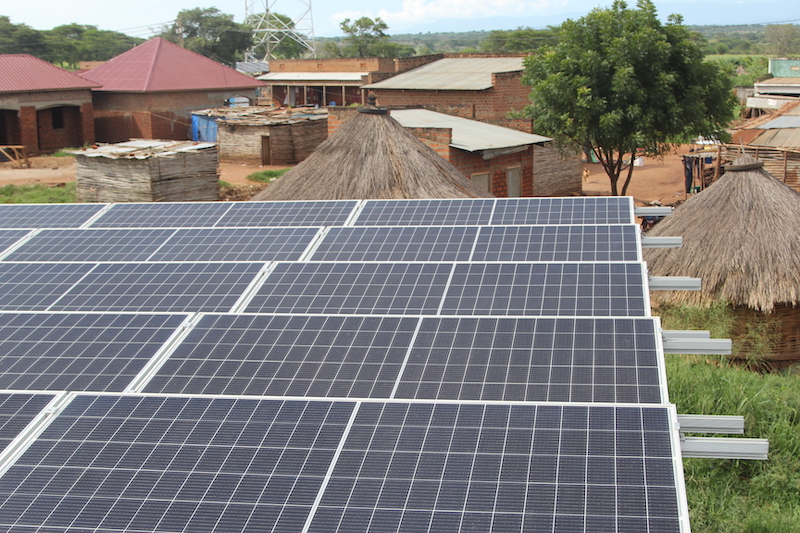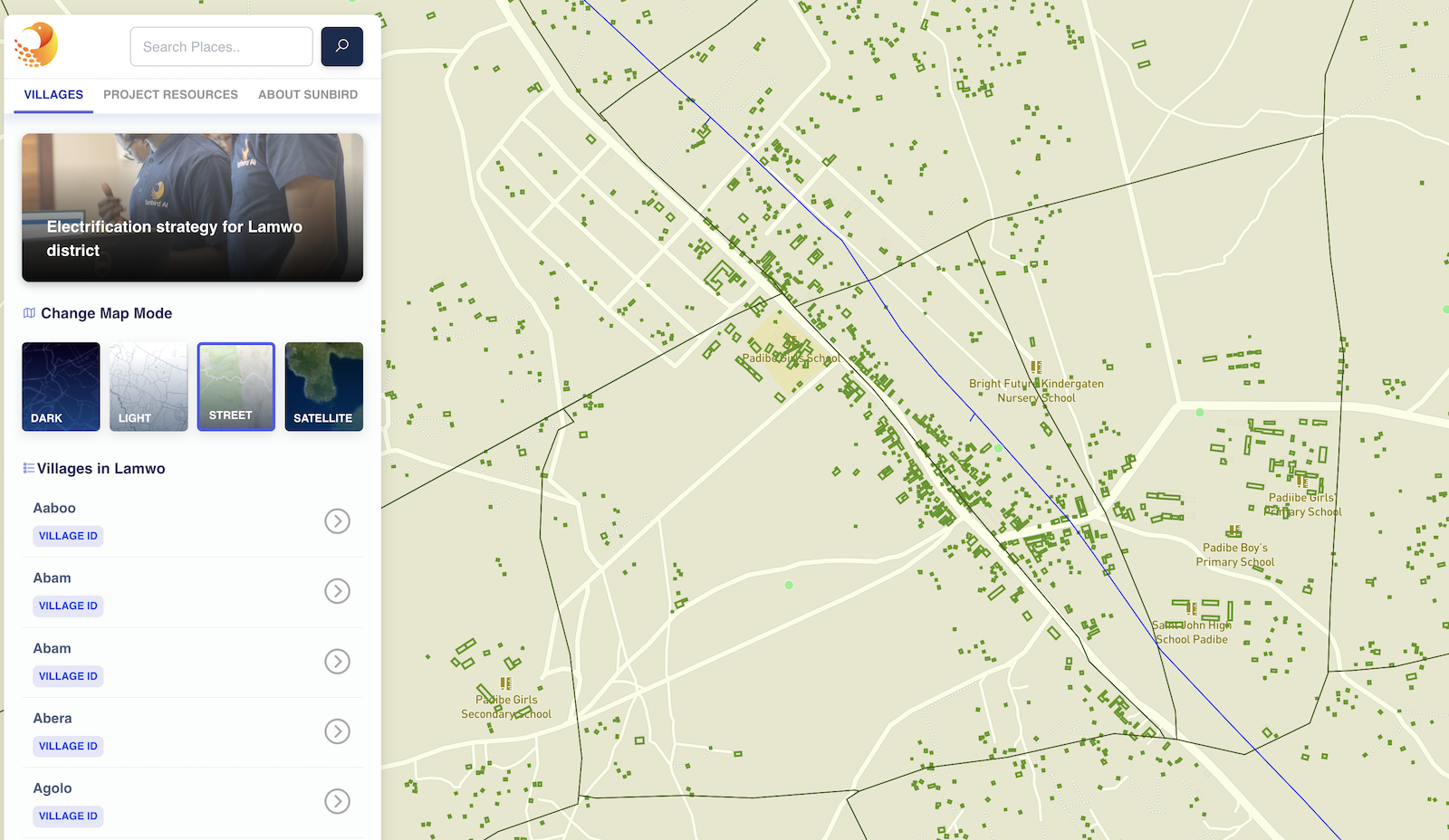Green Electrification Planning
Evidence-Informed Decision Making


ABOUT THE PROJECT
Uganda is endowed with great renewable energy potential, able to generate power from solar, hydro, biomass and wind. However, only about 27% of the country’s population has access to any kind of electricity. Outside of the cities, the number drops to just 10%. This low electrification rate is considered a major barrier for economic development and poverty reduction.
Sunbird AI is supporting the German Agency for International Cooperation (GIZ) and The Ministry of Energy and Mineral Development in implementing the National Electrification Strategy (NES) which provides a strategy aimed at connecting 10 million households to the most optimal energy source by 2030. We are developing an AI based open data site identification system to increase the accuracy of planning assumptions of selections for renewable energy sites and energy source options in Lamwo district.
Visit our online tool for electrification of Lamwo district to view options for electrification of the district.
MACHINE LEARNING FOR ELECTRIFICATION
We use machine learning to automate the determination of optimal electrification strategies. To do this we use several remote sensing datasets including the open buildings dataset, population data, NDVI, and several Uganda Ministry of Energy and Mineral Development datasets.
We aim to go beyond understanding the current needs for power to making forecasts for the years ahead. To do this, we are taking information about changes in buildings over time and training models to forecast the expansion or reduction of different settlements.